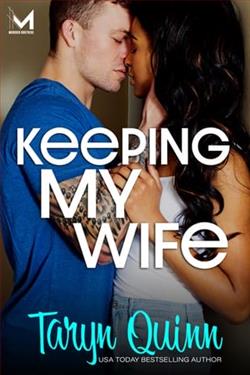Page 24 of Twisted Lies
‘Okay, enough of the emotional manipulation, Frost. You sure go low when you need to.’ He did a quick calculation in his head. ‘You’ve got three thousand words in print each night until it’s over and unlimited online.’
She smiled. It was more than she’d hoped for. Using his daughter had served her well.
‘But everything comes through me, even the online, got it?’
‘Absolutely, Fitz,’ she said, heading towards the door with a spring in her step.
It was time to start a bun fight.
Seventeen
‘I’ve never seen anything like it,’ Penn said, walking around the naked body of Keith Phipps.
He didn’t know a lot about burns. Jasper had suffered a couple due to his passion for baking. The first had been a superficial burn affecting just the outermost layer of skin. When he’d touched a hot pan.
A bit of redness on his fingertips had been eased by running the hand under cold water.
His brother hadn’t been quite so lucky when he’d spilled burning caramel onto his bare toes, causing the skin to blister. A trip to A&E had resulted in painful cleaning and bandaging to prevent infection. These were just two of the reasons Jasper was not allowed to cook without supervision.
But anything he’d seen before paled beside this victim.
‘Death would have been a welcome relief to this poor fellow,’ Keats observed. ‘He was dead long before he took his last breath, I’m afraid.’
‘How so?’ Penn asked, always eager to learn.
‘You know about the rule of nines?’ Keats asked.
‘Kind of,’ he answered honestly.
‘It’s an assessment system used by paramedics and hospitals worldwide to establish the surface area of the body affected and the likelihood of the injuries causing death to the individual.’
‘Likely to cause death?’ Penn questioned. ‘Surely if a burns victim is alive when found there’s a chance of recovery?’
Keats shook his head. ‘Not the case, I’m afraid. Let me explain. The body is split into sections that are either divisions or multiples of nine. The front of each leg accounts for nine per cent each, the back and front torso count for eighteen per cent each, and the front and back of each arm counts for four and a half per cent each. Got it?’
Penn nodded while looking over the body of Keith Phipps and trying to do the maths.
‘By using the approximation of the body surface damaged and adding the victim’s age, you can establish the likelihood of the person dying from their injuries. The closer the total is to one hundred, the more probable it is a person will ultimately die days or even weeks later even if found alive.’
‘Of what?’ Penn asked.
‘Shock, septicaemia, heart attack. If we look at our man here it would appear that approximately eighty-nine per cent of his body is covered in second-degree burns, which are worse, in my opinion, for this fellow than third-degree burns.’
‘How so?’ Penn asked. It was his understanding that third-degree burns were the most severe, causing damage through every layer of the skin.
‘There’s a misconception that third-degree burns are the most painful, but the damage is so extensive there may not be pain because of nerve damage. Do you see these reddened areas?’ Keats asked, pointing to one of a hundred marks over the body that varied in size from a centimetre to approximately five centimetres.
‘These are blisters that have popped open to reveal painful scorched skin, which has then been subjected to more heat from the fire.’
‘Bloody hell,’ Penn said, trying to imagine the agony of having the burns reheated.
‘Eventually fibrinous exudate may have developed over the—’
‘Fibrinous what?’
‘Scab,’ Keats clarified. ‘Every single one of these blisters would have been prone to infection. The worse the blister is, the longer they take to heal. The pain from even a tenth of these would have been excruciating to live with. Even the most basic movement would have been agonising, and any skin graft would have been out of the question.’
Penn knew there was nowhere on his body from where the healthy skin could have been taken.















